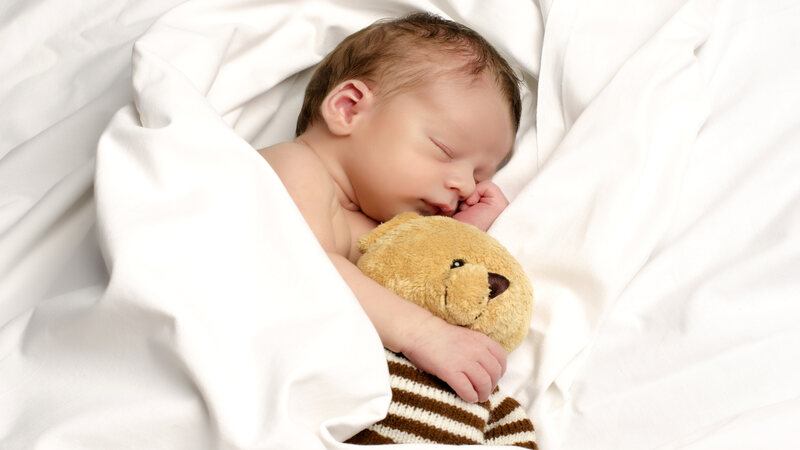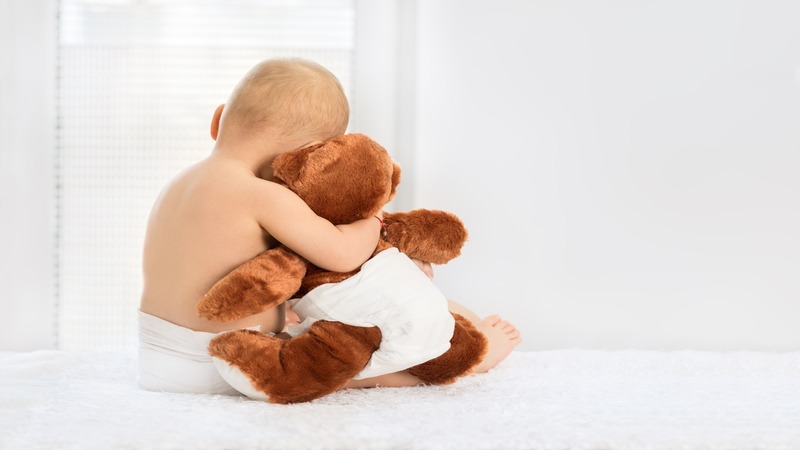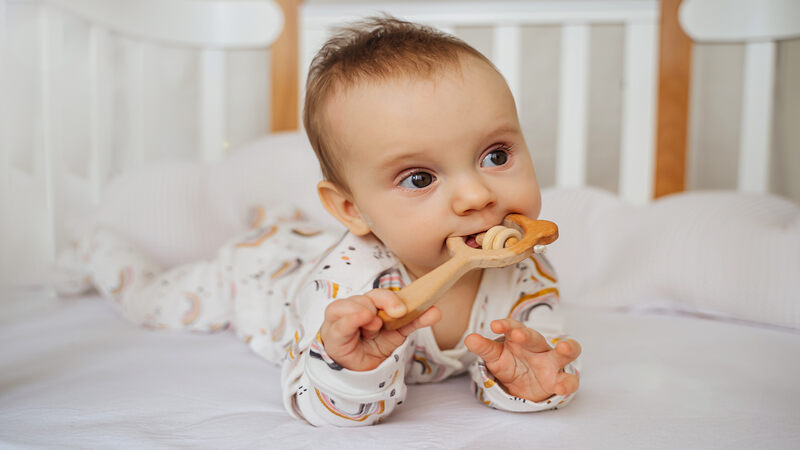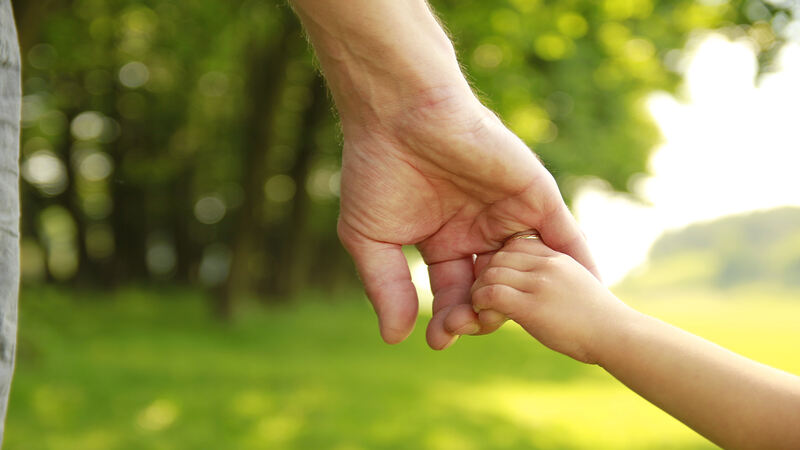 Babies and transitional objects can be inseparable. Your will observe many babies having a favorite toy or object that they want to spend the most time with. They may also take this favorite item, also known as a lovey, to sleep with them. If you’re a bit puzzled and don’t know why babies get attached to a lovey, and why you might have done the same in your childhood, keep reading.
Babies and transitional objects can be inseparable. Your will observe many babies having a favorite toy or object that they want to spend the most time with. They may also take this favorite item, also known as a lovey, to sleep with them. If you’re a bit puzzled and don’t know why babies get attached to a lovey, and why you might have done the same in your childhood, keep reading.
Transitional objects make your baby feel loved and secure when you’re not near them, hence the name lovey. Babies also learn to bond with the world, and not get too clingy to their primary caregivers. It might not be possible for you to be present with your baby all the time. However, your baby wants to feel loved when you’re not with them. And in such scenarios, a transitional object or a lovey can become their buddy. Most importantly, your little one learns to face their fears and other emotions by themselves through this object.
In This Article
- What is a Transitional Object?
- Why Are Transitional Objects Important?
- How to Introduce a Transitional Object to my Baby?
- Why do Some Babies Adopt Transitional Objects or Comfort Objects?
- Benefits of Transitional Objects
- Disadvantages of Transitional Objects
- When Should Children Give up a Transitional Object?
- FAQ’s
What is a Transitional Object?
A transitional object can mean anything, a teddy bear, blanket, or any object that your baby will pick up as their go-to buddy, an object your baby connects with. Babies go through multiple changes as they grow but they find that their lovey is something constant. This causes them to develop a deep bond with the transitional object and keep it with them at all times.
Most babies do have a lovey, but if your baby doesn’t have one, you can help them develop a bond with a stuffed toy, a book, a small blanket, or anything that they seem to have a liking to.
Why Are Transitional Objects Important?

In 1953, Dr. Donald Woods Winnicott explained that an infant’s bond with a transitional object carries a deep meaning. For the first time, the baby looks up to someone other than their mother (or primary caregiver) for emotional comfort and security. In other words, a transitional object is the first relationship that the baby develops outside the comfort of the mother.
Ideally, babies start having a transitional object when they are as early as 4 months old and most babies have a lovey before they reach 12 months of age. Not only do these objects create a security blanket for babies, they will also be able to stay away from their mother or caregiver for some time without getting anxious. Sleep training also becomes easy for babies who have a dovey since they feel comfortable falling asleep despite the fact that their mother or caregiver is not present.
How to Introduce a Transitional Object to my Baby?
Your baby’s bond knows no form – they may get attached to teethers, cloth, diapers, and even a small soft book. Therefore, you need to be cautious about this.
1 Watch What Your Baby Likes
The first step is to pick up something your baby likes. Try and spot the object that has caught your baby’s fancy. You can slowly encourage your baby to bond with the object.
For hair twirlers, a stuffed animal with a fringe would be good, and for babies who like to massage their object, a small thick blanket would be the best, and so forth.
2. Give Life to The object
Give your baby a sense that the object is alive. Play peek-a-boo with the toy during feedings. Cuddle the toy between you two when it’s story time to give it your ‘mommy’ or ‘daddy’ smell. These may encourage your baby to bond with the object.
3. Make Sure That Their Lovey Doesn’t Harm Them
The object should be big enough for your baby to hug it, and small enough that it can’t be used to climb out of their little crib. Small items in the object like the eyes or nose shouldn’t become a choking hazard.
4. Bathe Their Lovey Regularly
Keep a spare buddy handy when you want to clean it. Keep washing the lovey from the start, so that your baby doesn’t get too attached to its smell.
Some babies want to be nursed or bottle-fed while sleeping, so if they don’t bond with it at first, keep trying for a while. They may eventually adopt the lovey. And even if they don’t, it’s not something to be concerned about.
Why do Some Babies Adopt Transitional Objects or Comfort Objects?

Babies, at around 6-9 months begin to realize that they are an individual. And it’s a human desire to feel complete and love fills desire. While, you as a mother, will be their first love, they need something else to be with them all the time. And a transitional object helps with this.
Benefits of Transitional Objects
Here are some of the benefits of transitional objects.
1. Safety Blanket
Babies, especially those who understand object permanence, stranger anxiety and separation anxiety need some source of comfort to make them feel better. Transitional objects act as this source of comfort for babies.
2. Easy Transition From Dependence to Independence
Babies depend a lot on a mother, a family member or a caregiver to keep them occupied. Having a transitional object will reduce this dependence factor and help the baby spend time and play independently while the mother can take care of her chores without worrying.
Disadvantages of Transitional Objects
While there are not many disadvantages to having a transitional object, certain issues are possible. For example, a baby can develop a bond with a transition object that is chokeable or has chokeable parts. This is definitely a cause for concern.
In addition, losing a lovey can be stressful for a baby, especially an older baby. Parents must have an exact replica toy or an object for such emergencies. In addition, having a duplicate lovey also allows time for the mother to wash and sanitize the lovey regularly.
When Should Children Give up a Transitional Object?

Let your baby play with their grandparents, neighbors, new people, and so on. The idea is that they learn to share joy and emotions with people other than their soft buddy. They’ll inevitably say goodbye to their sweetheart near the age of 2-5.
Your little one seeks your love the most. Keep the cuddling of their lovey limited to bedtime, when you’re not around, or while introducing them to new people or environments.
FAQ’s
1. Do All Babies Have Transitional Objects?
Every baby may not have a transitional object. Some babies may not want or need it and this is completely normal.
2. Are Transitional Objects Healthy?
Yes, they are. Let’s say your infant is feeling too afraid to be alone. Now, having a teddy bear or any object will make their brain understand that they can feel safe with others too when you’re not around.
3. How do I Help my Baby Get Attached to a Lovey?
Calling their lovey by a name and snuggling it between you two will give personality to the toy. It’s good for forming a bond.

